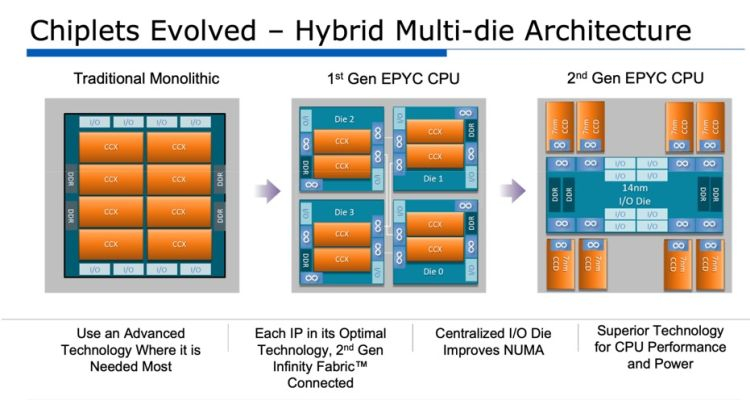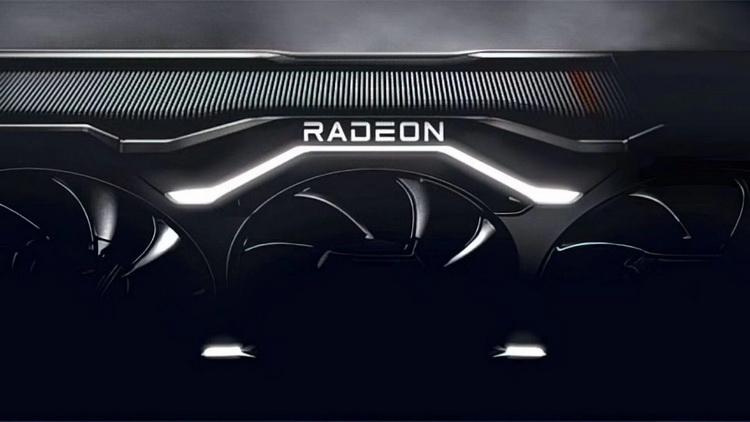
AMD boldly talks about its approach to the layout of modern processors - it has been using the so-called chiplets for years, and can provide the results of calculations confirming the feasibility of this approach. Interestingly, chiplet processors need more silicon than monolithic ones, but the former are still cheaper to produce.
Image source: AMD, EE Times
AMD representatives managed to publish the next results of calculations during the ISSCC 2021 event, the agenda of which was followed by EE Times website. A year ago, AMD has already explained that the hypothetical 32-core EPYC processor on a monolithic chip would be two times more expensive than the chipset-based model, and the company would not be able to produce a model with 64 cores using monolithic layout.
Image source: AMD, EE Times
Elaborating on the theme, AMD reported this year that a 32-core EPYC processor with four chips consumes about 852 mm2 of silicon, while its hypothetical monolithic chip counterpart would take up 777 mm2. It would seem that the silicon consumption when using chiplets is about 10 % more, but in practice the multicrystal processor turns out to be 41 % cheaper to produce. Firstly, compact crystals produce a lower reject rate, as the risk of on-chip defect concentration is reduced. Second, the processor can be assembled from heterogeneous crystals produced using different lithographic technologies. The most advanced and expensive technological processes are needed to produce crystals with computing cores and other high-speed logic. The auxiliary part, on the other hand, can be satisfied with older production technologies, which are cheaper. Nevertheless, the increase in silicon consumption during the transition to chipsets contributes to the burden on manufacturers and exacerbates product shortages.
Image source: AMD, EE Times
AMD reminds us that it's more than four times more expensive to produce a 250mm2 conventional chip using 5nm technology than it is using 45nm technology. A monolithic 7nm EPYC processor with 32 cores would be twice as expensive as a multichip one. Well, the silicon consumption increase by 10 % in this layout is explained by the additional logic, which is needed to transfer information between the chips and coordinate their work. In the future, AMD will think about the integration of memory chips on a chip with computing cores, as well as the use of higher-density interconnect methods. These ideas, as we know, are to a certain extent shared by Intel.


0 Comments